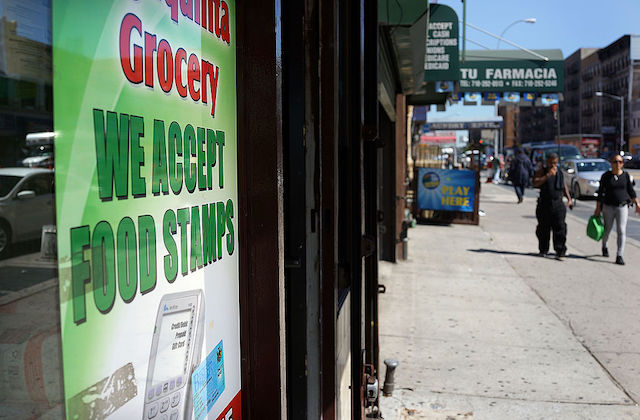In an effort to foster what it calls “self-sufficiency,” the Trump administration is looking to bring major changes to the Supplemental Nutrition Assistance Program (SNAP), also known as food stamps. As a result, an estimated 755,000 people could lose benefits. Two new studies show the detrimental impact that would have not only on individuals, but the nation’s economy, too.
When President Donald Trump released his budget proposal for 2020 on March 11, it included a cut of $220 billion over the next decade for SNAP. This is in addition to a rule announced in December to impose stricter work requirements for those seeking hunger relief through SNAP.
A new study from think tank Mathematica published last week (March 14) examines the characteristics of those who would be impacted by this rule change and found it would hit those with the lowest income hardest. The study analyzed the 1.2 million SNAP recipients and determined that 88 percent live in “deep poverty,” which the study defines as at or below 50 percent of the poverty level; close to 80 percent live alone; 11 percent worked; and the average monthly SNAP benefit was $181 per person.
According to the study:
rnt
Under the proposed rule, an estimated three-quarters of these SNAP participants would be newly subject to a three-month limit on their benefits, according to USDA. Some of them would increase existing work to an average of 20 hours per week, find work or meet the work requirements by participating in an employment and training program or workfare (unpaid work through a state-approved program). However, USDA estimates that two-thirds (755,000 people in 2020) would not meet the additional work requirements and would therefore lose eligibility after three months.
A study from another think tank, the Center for American Progress (CAP), analyzed the impact on the entire United States’ economy. It determined that the proposed budget cut, if passed, would lead to a loss of 178,000 jobs by 2030, as a result of reduced consumer spending. It looked at last year’s job market and determined that every 1 billion spent by SNAP recipients helped support 12,748 jobs. Adds Mother Jones, “CAP estimates that taking away benefits could shrink the GDP by $18.3 billion over the next ten years.”
There are 16.4 million households and more than 34 million people who rely on SNAP benefits in the United States, according to data from the U.S. Department of Agriculture. White Americans are 38.9 percent of that group, Black Americans are 24.9 percent and Latinx are 11.8. As Colorlines previously reported, food insecurity and SNAP participation are disproportionately high among queer and trans people of color.
